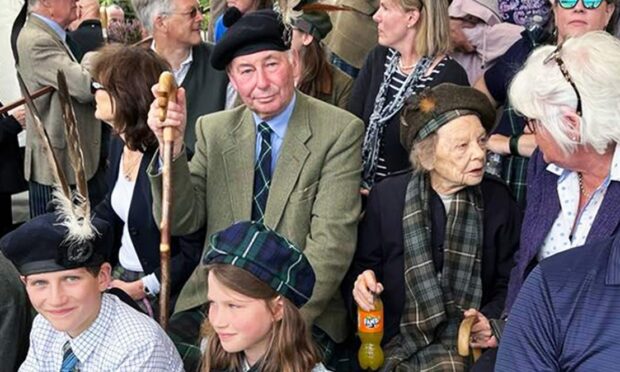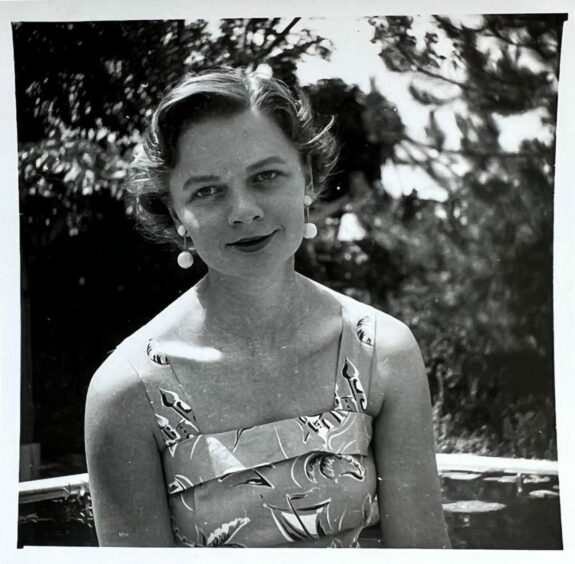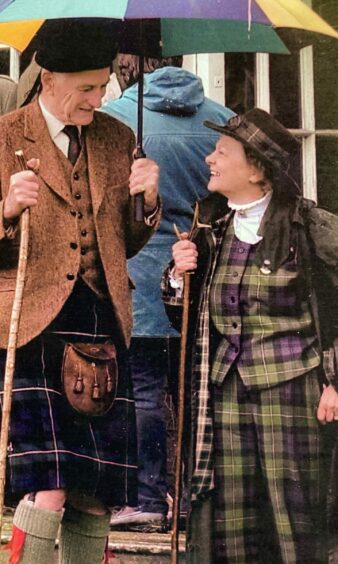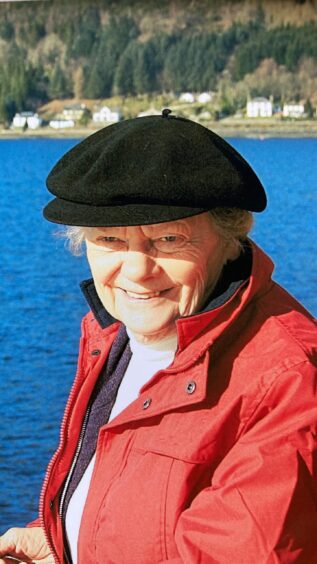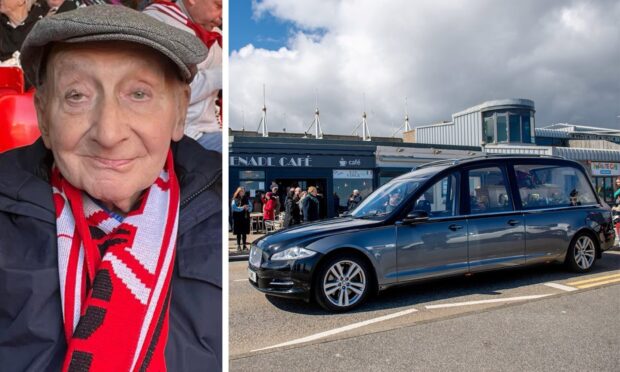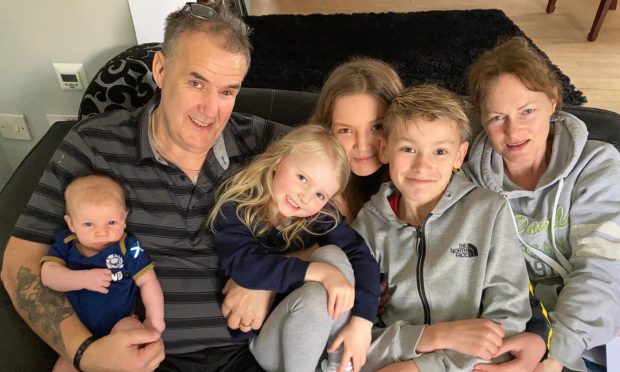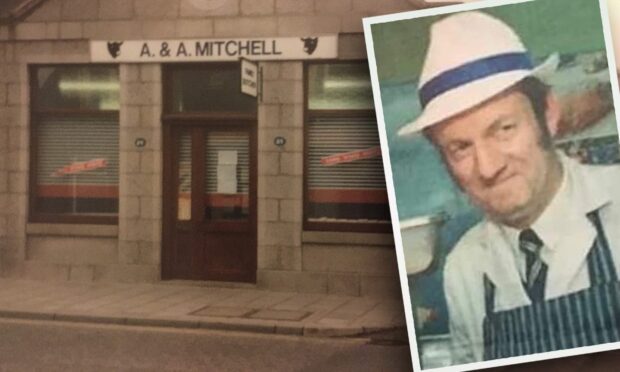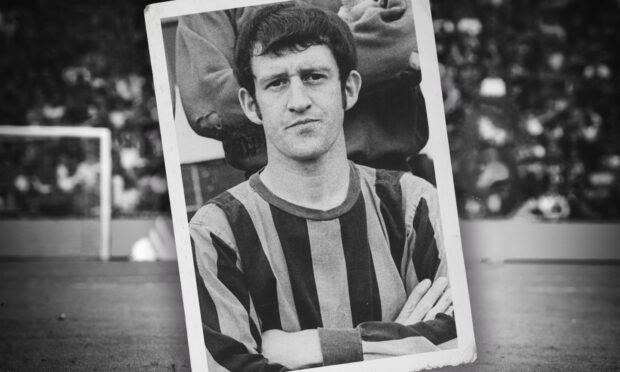Lady Mary Forbes was every inch the Highlander.
In a family photo, Mary, who was 93 when she died last month, appears as imbedded in Strathdon and its noble history as the family she married into.
Captured at the Lonach Highland Gathering, clothed in clan tartan, it’s only the unceremonial bottle of Fanta in her hand that offers a hint to the trailblazing nature of the woman raised in England and taught the importance of proper etiquette.
Made MBE for her work as personal assistant to the UK’s United Nations representative during her time as a young woman in New York, her life is as rich and colourful as the Aberdeenshire landscape she came to call home.
Childhood memories
Born on April 19 1930, Mary Christine Rigby was the daughter of Grace and Ernest Rigby. Raised in Cheshire she was the younger of two girls and fondly remembered a happy childhood bolstered by all things becoming of a young lady.
Mary and her sister Anne attended Kent House School in Sale. Age 10, as bombs began to fall, she kept a journal. Describing her home as being near the river and so a prospective “path for the Germans to follow”, she added: “We had to prepare for air raids. So, the wash cellar (which had a fireplace of course) was prepared with a bed.
“On the first night raid my father banged his head coming down the cellar steps and my mother spent the rest of the raid going upstairs and down, ministering to him.”
Soon after the war the family moved to Oxford. Mary’s father had contracted malaria in East Africa during the First World War and it was thought Oxford air would aid his recurrent issues.
Foreign Office career
After her final year at school year, Mary’s parents enrolled her in Miss Sprules’ Secretarial College. She excelled and like many of her alumni found work with the Foreign Office.
Mary too soon found a position there, moving to London, where she began her career in the Nigeria office. Ankara, Turkey, was her first foreign posting. She recalled those days in her journal.
“Joining the Diplomatic Service as a young shorthand typist is a momentous and exciting step to take anyway, but in my day, I was hurried abroad so quickly that neither I nor my family had time to brood,” Mary wrote. “Whereas an officer and his wife and family takes his domestic life with him, a single person casts herself off from all her ties and feels rather a frail barque launched onto the wide seas of the world.”
‘Entertaining in earnest’
Mary’s niece Catherine said: “Her letters home from Ankara sometimes spoke of the hard work and lonely times she had as a single girl. Much more frequent was the mention of the fun and excitement she gained travelling and going to cocktail parties.”
Travel and socialising provided joy alongside the hard work it required to succeed in the Foreign Office.
Her next posting was to Saigon as a personal assistant, shortly before the Vietnam War. Here she enjoyed a privileged life with servants for the first time so was able to “entertain in earnest”.
Mary wrote about the man charged with serving her.
“Chung might well have been called a male chauvinist by women’s libbers nowadays because he clearly thought it beneath him to look after a couple of women. ‘You want drink?’ was his courteous invitation to any man who called and it took a long time for him to realise that female Europeans might not mind joining their guests in a drink.”
Hard work recognised
From there to Poland and later New York where she was personal assistant to Lord Caradon, the United Nations ambassador.
In 1970, she was made MBE for “work as personal assistant to United Kingdom permanent representative to the United Nations, New York”. That same year she finally returned to the UK before one last move, to Spain.
A post of vice-consul in Madrid would be her last with the Foreign Office. Exciting though the seminal seasons of her life were, it was the latter half that allowed Mary to find fulfilment.
Family and fulfilment
In September 1981 Mary married the love of her life, Major Hamish Forbes, in London. They would remain together until his death in 2007.
Sir Hamish Stewart Forbes, 7th Baronet of Strathdon, offered Mary what her transient life was missing – roots and family.
Divorced, Hamish had children from his previous marriage, but also hundreds of years of ancestry tied to Aberdeenshire.
Mary embraced all aspects of life with Hamish and threw herself into becoming an adopted Scot. Through the Lonach Society she brought her knowledge and hard-earned Foreign Office skills organising expeditions.
The lure of travel never left her. She and her husband made frequent trips around the world.
Fond memories
Her stepson, Sir James Forbes, said: “Back home at Newe, our main get togethers were the raucous family fish pie suppers held each year on the eve of Lonach.
“Mary somehow managed to cater for and fit us all around the table, despite the growing crowd of grandchildren. and she could certainly cook so these meals were always delicious in spite of the apparent simplicity of the menu.
“My father’s death in 2007 was obviously devastating to Mary, but the roots she had established in this community over the preceding 20 years sustained her, and allowed her to continue to nurture the bonds of place.”
Leaving Newe
The family seat – Newe House – was much loved by Mary. As a woman in her 90s, however, living in a home, often cut off in winter, brought with it many challenges.
“Realising that she couldn’t realistically continue in the house without a full time live-in carer was a very difficult personal decision for her,” added Sir James, “but after exhausting all other options and even giving the carer a try, she had to come to terms with the fact being as independent as she was, Mary was just not cut out for having a stranger, no matter how compassionate, kind and qualified.”
Reluctantly she moved into Inchmarlo care home, where she passed away on May 22.
“The problem was that the roots she had craved when she married my father were now so well established in her that she was in fact no longer able to draw on her old Foreign Office instilled ability to accept a “new posting” at a moment notice. Severed from her Newe roots, Inchmarlo proved to be a posting too far.”
Celebration of her life
An enthusiastic supporter of the Lonach Highland Games and Gathering, Mary, Lady Forbes, was a “real social animal”. “Genuinely interested in everyone she met and came to know,” Catherine added, “she had a piercing intellect and questioning approach to life.”
She is survived by her nieces Joanna Snow and Catherine McMahon, Sir Hamish’s children from a previous marriage: Sir James Thomas Stewart Forbes of Newe, 8th Bt; Caroline Serena Forbes; Jane Henrietta Mary Forbes; Christian Clare Forbes; and grandchildren.
A celebration of her life took place at Strathdon church on Monday June 19.
